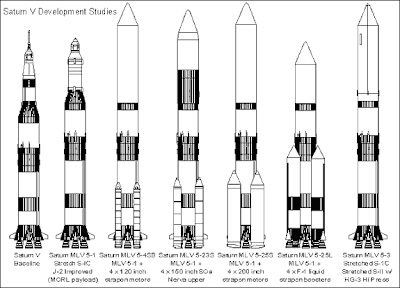Location: Day-Dreaming about a 1985 Mars base
image source: Encyclopedia Astronautica's entry about the Saturn V rocket
What might have been, had Richard Nixon been a different man, possessing an optimistic vision that matched his calculated-but-brilliant realpolitik demonstrated by the opening to China and the bombing of Hanoi's government to the negotiating table.
I've been thinking of this occasional series since I began shaving with my grandfather's safety razor. It still works great and costs me very little, months into my experiment. Now I own two of these antique Gems (the trade name that fits well). They demonstrate that corporations seeking new markets often over-engineer products and make dubious claims about their improvement. I wish government could do better, but history shows otherwise when it comes to manned space travel. Odd for me to propose such flights of fancy. I call myself a Neo-Luddite, though as one friend pointed out, I'm better described as a "Reform Luddite" more interested in appropriate technology than in getting rid of technology or curbing its use drastically.
I hope to explain why this Neo-Luddite thinks the US needs its manned program badly, and why it needs NASA for the sort of deep-space ventures that both Presidents Bush and Obama championed. Both Presidents had NASA contractors scramble to re-invent something we gave up nearly 40 years ago: a heavy-lift rocket suitable for deep-space exploration.
When Nixon canceled the last three missions of the Apollo program, it put the world's most effective--then or now--space transportation system on its way to the scrap heap. It's a myth that the Saturn V rocket's plans were scavenged from NASA dumpsters, though as Dwayne A. Day noted, records were lost or destroyed along the way. In any case, once the assembly lines for the Saturn IB and V shut, engineers moved on, and the tooling got dispersed or scrapped, there was no practical way to rebuild the mighty F-1 engine or other components without reverse-engineering from a museum piece at huge cost. Rocketdyne did, as Day notes, save their records and record information from Engineers involved in the F-1 program. Much of the rest of the Saturn, however, would not meet modern standards for alloys and other technologies. A similar rocket today would weigh less and have the benefits of computer-assisted design. That's my hope for Dragon's proposed heavy-lift rocket.
But what if Saturn and its mighty engines had stayed in production, to be incrementally improved or parted out to new NASA and private vehicles? Most of the pieces for a Mars mission were in place by 1970.
Boeing, in 1968, studied the technology needed to go to Mars by the mid-80s: a Nerva nuclear third stage lofted into orbit by a Saturn V, followed by assembling a Mars spacecraft there. Instead, we got Skylab, then an expensive and tragically flawed pickup truck to low orbit called the Space Shuttle.
Our nation badly needs unity now, and my optimistic side favors a multi-year mission scientific mission to Mars, using the International Space Station if possible to assemble our Mars ship, all this with the aim of resolving the questions about past or present life on the Red Planet. Such a program, paid for by deep cuts in defense spending and, yes, more debt, would have pay-offs in the hiring of technicians and engineers whose work would develop the sorts of spin-off technologies that came from Apollo, including the small computer on which I am writing this post.
We need deep space missions, not merely planting the flag but searching thoroughly and with tools greater than those carried by the Martian rovers. Finding out if we are alone or not in our solar system would, I'd hope, make the texting masses look above the horizon again. NASA's lead can help private industry follow, not to do science but to pioneer, as the pioneers came in the wake of Jefferson's expedition to the Pacific.
And if profit is to be had in space, profit that requires humans to live there, the masses will do more than look up.
They'll go there and we'll become an interplanetary species.

No comments:
Post a Comment